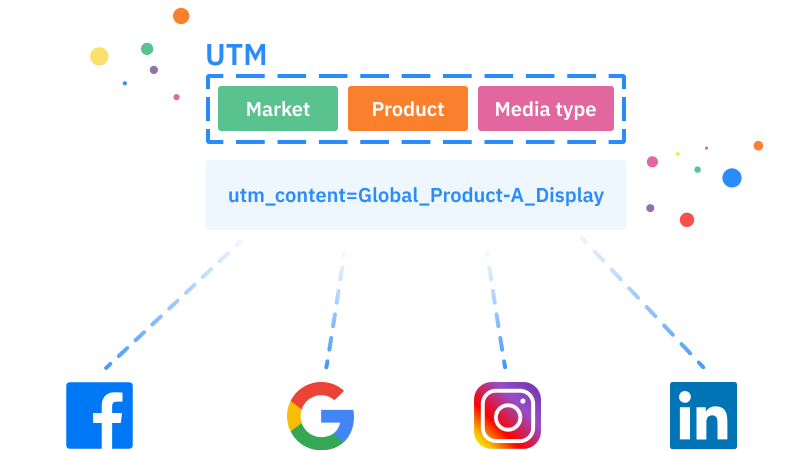What is Campaign Tracking?
Campaign tracking is a crucial strategy for gauging the effectiveness of marketing campaigns.
It involves monitoring campaign tracking data to measure the impact of various marketing efforts across different channels, including social media, email marketing, and ad campaigns on websites and search engines. This method tracks the origin of website traffic, user engagement on your site, and the revenue generated by specific campaigns.
For example, in an email campaign promoting a new product, campaign tracking helps in understanding the customer journey by analyzing key metrics like how much traffic the campaign directed to your site, the user actions taken, and the conversion rates. This data is essential for businesses to identify which marketing materials or ads are most effective, optimizing future campaigns for better success.
Tools like Google Analytics play a significant role in campaign tracking. They provide insights into user behavior and campaign effectiveness by tracking unique URL visits, UTM parameters, and other key data points. This helps marketers to better understand how different platforms and marketing channels contribute to their business objectives.
By utilizing campaign tracking, companies can refine their marketing strategies, ensuring that efforts are aligned with campaign goals and ultimately driving more successful marketing outcomes.
Why is Campaign Tracking Important?
Transforming Marketing Efforts with Campaign Tracking
Campaign tracking is not just a beneficial tool; it’s a critical element in the arsenal of marketing strategies. By leveraging campaign tracking, you gain deep insights into user engagement, allowing you to pinpoint both the triumphs and shortcomings of your marketing campaign. This knowledge is invaluable for shaping and optimizing future marketing efforts across various channels, including social media, email marketing, and search engine advertising.
How Campaign Tracking Drives Business Success
Imagine launching an ad campaign or sharing content via social media posts. Campaign tracking enables you to track the website traffic these efforts generate, providing data on the effectiveness of each marketing channel. Using tools like Google Analytics, you can monitor key metrics, such as conversion rates and user engagement, to understand the impact of your campaigns on your business objectives.
Optimizing Campaigns for Maximum Impact
The real power of campaign tracking lies in its ability to inform and enhance future campaigns. For instance, if you find that a guest blog post drives significant traffic but fails to convert visitors into customers, it’s a cue to refine your landing page or review the campaign’s call to action. Campaign tracking data helps you swiftly identify and rectify such issues, ensuring that every marketing material you create contributes positively to your overall marketing strategy.
A Tool for Continual Improvement
In conclusion, campaign tracking is essential for businesses aiming to maximize the return on their marketing investments. It not only helps in measuring the success of current campaigns but also provides a roadmap for improving future marketing endeavors across different platforms, be it through email campaigns, social media, or other advertising channels. By embracing campaign tracking, marketers can continually refine their approach, aligning their efforts with their campaign goals and driving greater success.
Types of Campaign Tracking
There’s more than one way to track a campaign, and the best method for you will depend on your needs and the nature of your campaign. Let’s break down the three main types:
UTM parameters: Think of it as a tracking system that provides crucial data about your traffic. For instance, if you’re running a campaign on Facebook using UTM parameters, you can precisely measure how many users arrived at your site from that particular campaign. It’s like having a detailed report that helps you understand your audience’s behavior and the effectiveness of your campaigns.
Pixels: These are like invisible security cameras planted on your website to observe user behavior. If you’ve ever wondered how Facebook shows you ads for products you were just checking out on an e-commerce site, that’s the magic of pixels at work!
Cookies: Picture a personal assistant who takes notes on a user’s interactions with your site over time. Cookies track the user journey, offering insights like how many times a user visited your site before making a purchase, which pages they visited, and more.
What Marketing Channels Use Campaign Tracking?
Wondering where you can unleash the power of campaign tracking?
Everywhere is the answer!
Especially in online advertising—this includes search engine marketing (SEM), social media marketing, and email marketing.
Social media lets you determine which posts bring in the most traffic and conversions. For instance, if you notice a specific type of post (say, user-generated content) performing better on Instagram, you might want to include more of that content in your strategy.
For PPC/ad campaigns, tracking is similar to social media. It can help you identify the most effective ads, enabling you to optimize your ad strategy. For example, if you notice one particular keyword bringing in a lot of quality traffic, it’s probably worth increasing your bid on it.
For email campaigns, you can track how many people click each link in your email and see which emails lead to the most conversions. So if that witty subject line resulted in a higher open rate, it’s a good sign to bring more humor into your emails!
How to Get Clean Campaign Tracking Data?
Clean campaign data is crucial to making accurate and effective marketing decisions. It’s like cooking with fresh ingredients—you’re more likely to end up with a delicious meal (or, in this case, a successful campaign).
So, how do you ensure your data is clean?
Consistency is key: Consistent naming conventions across all campaigns help avoid confusion. For instance, if you’re using the UTM parameter utm_source, don’t switch between ‘Facebook,’ ‘facebook’, and ‘fb’. Stick to one!
Use a hierarchy: Classify data based on importance. With Mediatool’s customizable media data taxonomy, you can organize your data in a way that makes sense for your business.
Eliminate the junk: Regularly audit your data to ensure no irrelevant or duplicate information. Mediatool’s Version History feature helps you ensure you’re always working with the most recent and accurate data.
Top 5 FAQs about Campaign Tracking
What are UTM parameters?
UTM parameters are specific tags added to a URL to track key data about website traffic.
Can I use campaign tracking for offline marketing campaigns?
Yes, you can! You can use methods like unique URLs or QR codes in your offline marketing materials that lead to specific landing pages.
Is campaign tracking compliant with privacy laws?
Absolutely, as long as you’re transparent with users about what data you’re collecting and why, ensure you have their consent.
What is the most important data to track in my campaigns?
It depends on your goals, but typically, you’ll want to track the source of your traffic, user behavior on your site, and conversion rates.
What’s the difference between a pixel and a cookie?
A pixel tracks specific actions on your website, while a cookie tracks a user’s behavior over time.
Introducing Mediatool: Your All-in-One Campaign Tracking Solution
Now that you’ve got the campaign tracking lowdown let’s talk about how you can effortlessly apply this to your marketing strategy with Mediatool—a B2B SaaS media management platform that puts measuring and tracking at the forefront.
With Mediatool, you get real-time visibility of your campaigns’ performance data, allowing you to tweak your plans and budget on the fly. Our platform lets you integrate your marketing channels, set custom tags, UTIs, and UTMs, track your planned vs. actual spending, and measure your KPIs and ROI—all in real-time!
Mediatool’s media data taxonomy feature enables you to set custom tags and tag hierarchies, ensuring that you can classify data in a way that makes sense to your team. This way, you can plan campaigns, track data, filter, and generate reports, knowing everything is right where it should be.
Our UTI codes feature allows you to connect campaign plans to real-world performance, while our custom UTM building helps you create UTMs to track your media in 3rd party systems based on your custom format.

Finally, our powerful data integrations give you access to data from platforms like Facebook, Google Campaign Manager, Google Ads, LinkedIn, Instagram, and more, enabling you to monitor your campaign in real-time.

With Mediatool, you’re not just making informed decisions, you’re making the best decisions. Ready to take the guesswork out of your marketing campaigns? Dive in with Mediatool, and let’s make data-driven marketing decisions together!
So, now that you’re armed with this treasure trove of campaign tracking knowledge, are you ready to dive into the world of data-driven marketing? We bet you are! Go on, and let Mediatool guide your way to campaign tracking mastery. Take a tour of Mediatool today.




